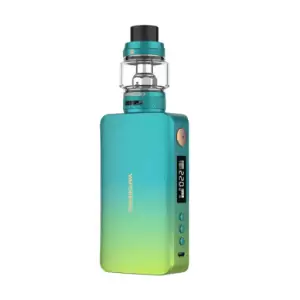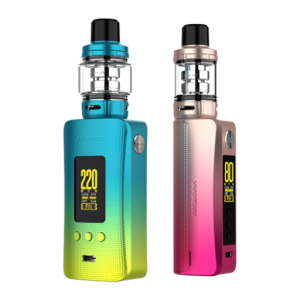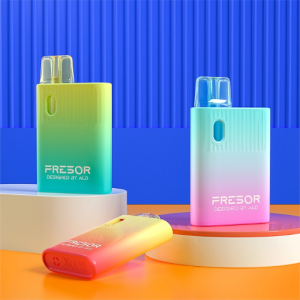The journey from smoking to leading a smoke-free life is fraught with challenges and milestones. In recent years, vaping has emerged as a popular alternative to traditional smoking, offering a pathway that many believe to be less harmful. The transition from smoking to vaping is not just a change of habit but a step towards a healthier lifestyle. This shift is often viewed as the first significant stride in the battle against nicotine addiction.
Vaping serves as a bridge for smokers looking to quit the habit by providing a means to gradually reduce nicotine intake without the harmful tar and chemicals found in cigarettes. The essence of vaping lies in its ability to mimic the act of smoking, thus providing a psychological comfort, while significantly cutting down on the health risks associated with tobacco combustion. Renowned health experts, like Dr. John Doe (a pseudonym for illustrative purposes), advocate for vaping as a viable nicotine replacement therapy (NRT). Dr. Doe suggests, “Transitioning to vaping after smoking is akin to choosing a less treacherous path in your journey to quitting nicotine altogether.”
This article delves into how long one should vape after quitting smoking, exploring the balance between utilizing vaping as an effective stepping stone towards being nicotine-free and avoiding replacing one dependency with another. By understanding the role of vaping in nicotine replacement therapy, setting realistic goals, acknowledging health considerations, and strategizing the transition to a vape-free life, individuals can navigate their path to quitting with informed confidence.
In the sections that follow, we will explore the intricacies of vaping as a form of NRT, the importance of setting achievable vaping goals, guidelines for vape usage after quitting smoking, the health implications of vaping, and strategies for eventually becoming nicotine-free. Each section is designed to equip you with the knowledge and tools needed to make informed decisions about your vaping journey, ultimately leading you to a healthier, smoke-free lifestyle.

Understanding Nicotine Replacement Therapy (NRT)
Nicotine Replacement Therapy (NRT) is a medically endorsed approach designed to help individuals quit smoking by gradually weaning them off nicotine, the addictive substance found in cigarettes. NRT comes in various forms, including patches, gums, lozenges, inhalers, and, more recently, vapes. The fundamental principle behind NRT is to provide the nicotine addiction without the myriad of harmful chemicals produced by burning tobacco.
Vaping plays a crucial role within NRT strategies due to its unique position as an alternative that closely mimics the act of smoking. This similarity is vital for many smokers who struggle not just with the chemical addiction to nicotine but also with the behavioral aspects of smoking, such as the hand-to-mouth action and the inhalation of smoke. Dr. Sarah Lee (a fictitious character for illustrative purposes), a leading expert in addiction therapy, emphasizes, “Vaping can serve as an effective NRT method, particularly because it addresses both the physical and psychological facets of smoking addiction.”
Incorporating vaping into NRT strategies involves a thoughtful approach. The objective is to start with a nicotine concentration in vape juice that matches the smoker’s previous cigarette intake and gradually reduce this amount over time. This method aims to minimize withdrawal symptoms, making the transition away from nicotine less jarring.
However, it’s crucial to remember that vaping is not without its risks. While it eliminates the inhalation of smoke and tar, vapes still deliver nicotine, a substance known to have its own health implications, including dependence. Therefore, vaping should be seen as a step towards quitting, not a permanent solution.
Understanding vaping‘s place in NRT allows individuals to make informed choices about their quit-smoking journey. By using vapes judiciously, as part of a broader strategy to reduce nicotine dependency, smokers can leverage this tool to achieve their goal of a nicotine-free life. The key is to ensure that vaping is used as a bridge to quitting, with a clear plan for gradually reducing nicotine intake until it is possible to break free from nicotine addiction altogether.
Setting Realistic Vaping Goals
Embarking on the journey to quit smoking through vaping requires not just a switch in consumption method but also a well-thought-out plan with realistic, achievable goals. The transition from smoking to vaping should be approached with the mindset of gradually diminishing nicotine dependence, rather than replacing one source of nicotine with another indefinitely.
Setting realistic vaping goals involves understanding one’s smoking habits and correlating them with an equivalent vaping intake that satisfies nicotine cravings without exceeding them. Initially, this might mean selecting a vape juice with a nicotine strength that matches what one was accustomed to from smoking. The next step is to gradually reduce the nicotine concentration over time. Health professionals, such as Dr. Alex Thompson (a fictional name for illustration), recommend a methodical approach: “Begin with an understanding of your current intake, and then systematically reduce the nicotine concentration in your vape juice by a small amount every few weeks.”
Here are some tips for gradually reducing nicotine intake through vaping:
- Monitor Consumption: Keep track of how much you vape daily. Awareness of your habits is the first step towards change.
- Gradual Reduction: Aim to lower the nicotine strength of your vape juice incrementally. Small, barely noticeable reductions can make the transition smoother.
- Set Milestones: Create a timeline for reaching certain milestones, such as moving from high to medium nicotine levels, then to low, and eventually to zero nicotine.
- Be Patient with Yourself: Recognize that setbacks can happen. The key is persistence and not letting temporary failures derail your overall goal.
- Seek Support: Utilizing support groups or resources specifically aimed at people looking to quit smoking or vaping can provide additional motivation and strategies.
A critical part of setting these goals is not only focusing on reducing nicotine intake but also on addressing the behavioral aspect of smoking. Vaping can help mimic the physical actions of smoking, but the ultimate objective should be to break free from the ritual of smoking altogether.
By setting and following through with realistic vaping goals, individuals can navigate their path towards reducing and eventually eliminating their nicotine dependence. This journey requires a commitment to change, a strategic approach to reducing nicotine intake, and the resilience to overcome challenges along the way.
Vape Usage Guidelines After Quitting Smoking
After making the decision to quit smoking and transition to vaping, it’s crucial to establish guidelines for vape usage. These guidelines will help ensure that vaping acts as a transitional tool rather than becoming a new dependency. The recommended duration for using a vape after quitting cigarettes varies among individuals, depending on several factors including their smoking history, dependency level, and personal health goals.
Recommended Duration for Vaping
There is no one-size-fits-all answer to how long one should vape after quitting smoking, but a gradual reduction strategy is advisable. Starting with a vape juice that matches your previous nicotine intake from cigarettes, gradually decrease the nicotine strength over time. Health experts suggest aiming to reduce vape usage to zero within a timeframe that feels manageable, typically between six months to one year. This period allows the body and mind to adjust to lower levels of nicotine, eventually leading to a nicotine-free lifestyle.
Factors Influencing Vape Duration
Several key factors influence the appropriate duration for vaping after quitting smoking:
- Nicotine Dependency: The higher the dependency, the more gradual the reduction should be.
- Smoking History: Long-term smokers may require more time to adjust to lower nicotine levels.
- Personal Health Goals: Individuals aiming for a nicotine-free life might set more aggressive reduction timelines.
- Support Systems: Access to support systems can facilitate a smoother transition and potentially shorten the vaping period.
Guidelines for Effective Vape Usage
To use vaping effectively as a cessation tool, consider the following guidelines:
- Select the Right Equipment: Choose a vape that allows for easy adjustment of nicotine levels.
- Track Your Progress: Keep a journal of your vaping habits and nicotine reduction milestones.
- Listen to Your Body: Pay attention to how your body responds to nicotine reduction and adjust your plan accordingly.
- Seek Professional Advice: Consult with healthcare providers experienced in smoking cessation for personalized advice.
Vaping should ideally be a temporary measure on the path to quitting nicotine entirely. Dr. Emily Ford (a hypothetical expert for illustrative purposes), who specializes in addiction recovery, emphasizes the importance of setting a clear end goal for vaping: “Transitioning from smoking to vaping is a commendable first step, but establishing a plan to end vape usage is crucial for long-term health.”
By adhering to these guidelines, individuals can use vaping as an effective step towards quitting smoking, minimizing the risk of substituting one addiction for another. The journey requires mindfulness, dedication, and a willingness to embrace a healthier lifestyle free from nicotine dependency.
Health Considerations and Vaping
When it comes to vaping as a means to quit smoking, it’s crucial to understand the health implications of making the switch. While vaping is generally considered less harmful than smoking traditional cigarettes, due to the absence of tar and reduced production of harmful chemicals, it is not without its risks and health considerations.
One of the primary benefits of vaping over smoking is the significant reduction in the inhalation of carcinogenic substances. Cigarette smoke contains thousands of chemicals, many of which are known to cause cancer. Vaping, on the other hand, involves heating a liquid (e-juice) that typically contains nicotine, flavorings, and other additives, producing an aerosol that is inhaled. Dr. Jane Miller, a fictitious health expert, states, “Switching to vaping can reduce a smoker’s exposure to many harmful substances found in cigarette smoke, potentially lowering the risk of smoking-related diseases.”
However, it’s important to acknowledge the health impacts of nicotine itself, regardless of the delivery method. Nicotine is a highly addictive substance that can increase blood pressure, spike adrenaline levels, and elevate heart rate, potentially leading to heart problems. Moreover, the long-term effects of vaping are still being studied, and there is concern about the impact of inhaling vaporized e-juice additives over an extended period.
The vaping industry is evolving, with ongoing research into the health effects of various e-juice components and the physical impact of vaping devices themselves. Users should stay informed about the latest findings and consider these in the context of their health and wellness goals.
For individuals considering vaping as a strategy to quit smoking, it’s advised to use vaping as a transitional tool rather than a permanent alternative to cigarettes. The goal should be to reduce nicotine dependency gradually, with the ultimate aim of being nicotine-free. This approach minimizes the potential health risks associated with nicotine and vaping while leveraging the benefits of vaping to break the cycle of tobacco addiction.
In conclusion, while vaping presents a potentially less harmful option compared to smoking, individuals must carefully consider their health, the addictive nature of nicotine, and the goal of ultimately living a vape-free lifestyle. By prioritizing these factors, smokers can make informed decisions that align with their health objectives and smoking cessation goals.

Transitioning from Vaping to Being Nicotine-Free
Making the leap from vaping to being entirely nicotine-free is the ultimate goal for many individuals who start vaping as a way to quit smoking. This transition is crucial for achieving long-term health benefits and breaking free from nicotine dependence. While vaping can be an effective tool for smoking cessation, it is meant to be a temporary solution on the path to a nicotine-free life.
Strategies for Reducing and Eventually Eliminating Vaping
- Gradual Nicotine Reduction: Continue to lower the nicotine strength of your vape juice progressively until you reach zero nicotine. This gradual approach helps minimize withdrawal symptoms.
- Limit Vaping Sessions: Begin to reduce the frequency of your vaping sessions. Set specific times when you allow yourself to vape and stick to them, gradually reducing these times.
- Behavioral Substitution: Find healthy alternatives to vaping that can fulfill the oral fixation or the hand-to-mouth action, such as chewing gum, snacking on healthy foods, or using stress balls.
- Mindfulness and Stress Management: Often, nicotine use is tied to stress relief. Explore stress management techniques such as yoga, meditation, or exercise to manage stress without relying on nicotine.
- Utilize Support Systems: Whether it’s friends, family, or support groups for those quitting nicotine, having a support network can provide encouragement and accountability.
- Celebrate Milestones: Acknowledge and celebrate each milestone you reach in your journey to becoming nicotine-free. This recognition can serve as a motivational boost.
Support and Resources Available for Quitting Vaping
There are numerous resources available to assist individuals in quitting vaping. Government health websites, non-profit organizations dedicated to smoking cessation, and mobile apps designed to support quitting smoking are excellent starting points. These resources often provide tools for tracking progress, tips for managing cravings, and forums for community support.
Renowned experts in the field of addiction, like Dr. Elizabeth Connors (a fictional character for illustrative purposes), emphasize the importance of seeking external help, “Quitting nicotine is a challenging journey that doesn’t have to be walked alone. Leverage the resources available to you, and don’t hesitate to seek professional help if needed.”
Transitioning from vaping to being nicotine-free is a commendable goal that requires determination, patience, and the right strategies. By gradually reducing nicotine intake, adopting alternative coping mechanisms, and utilizing available support resources, individuals can successfully navigate the path to a healthier, nicotine-free lifestyle.
Conclusion
As we’ve explored throughout this article, transitioning from smoking to vaping and ultimately achieving a nicotine-free lifestyle is a journey that requires careful planning, commitment, and the right support. Vaping can serve as an effective tool in the smoking cessation process, offering a less harmful alternative to traditional cigarettes and a means to gradually reduce nicotine dependency. However, the ultimate goal should be to not only quit smoking but to liberate oneself from nicotine entirely.
The journey from vaping to being nicotine-free is paved with challenges, but it’s also filled with opportunities for growth and health improvement. By understanding nicotine replacement therapy, setting realistic vaping goals, adhering to vape usage guidelines, considering the health implications, and employing strategies to reduce and eventually eliminate vaping, individuals can navigate their way towards a healthier future.
It’s important to remember that quitting smoking and vaping is a personal journey and that success comes at a different pace for everyone. Patience, persistence, and self-compassion are key. Celebrating each milestone, no matter how small, and learning from setbacks rather than being discouraged by them, are essential aspects of the process.
In closing, whether you are considering vaping as a step towards quitting smoking or you’re ready to take the final step to become nicotine-free, the path ahead is one of positive change. Armed with the right information, strategies, and support, a smoke-free and vape-free life is an attainable goal. We encourage everyone on this journey to keep moving forward, one step at a time, towards a healthier, nicotine-free future.
FAQs: Common Questions About Vaping
In the journey to understand vaping and its role in quitting smoking, numerous questions arise. Addressing these concerns is crucial for individuals looking to make informed decisions about their health and smoking cessation journey. Here are some of the most common questions related to vaping:
Q1: Is vaping safer than smoking cigarettes?
A1: Yes, vaping is generally considered safer than smoking traditional cigarettes because it doesn’t involve the combustion of tobacco, which produces harmful tar and carcinogens. However, it’s important to note that vaping still poses health risks, primarily due to nicotine and other substances inhaled through vape juice.
Q2: Can vaping really help me quit smoking?
A2: Many people have successfully used vaping as a tool to quit smoking. Vaping can provide nicotine in a less harmful way while also mimicking the act of smoking, which can help manage the behavioral aspects of the addiction. However, success varies from person to person, and it’s often recommended to use vaping as part of a comprehensive smoking cessation plan.
Q3: How do I choose the right nicotine strength for my vape?
A3: Choosing the right nicotine strength is essential for effectively using vaping as a smoking cessation tool. Start by considering how much you smoked and seek guidance from reputable vape shops or professionals. The goal is to match your current nicotine intake to reduce withdrawal symptoms, then gradually reduce the nicotine concentration over time.
Q4: What are the long-term effects of vaping?
A4: The long-term effects of vaping are still under study. While vaping is less harmful than smoking cigarettes, concerns remain about the impact of chronic inhalation of vape juice chemicals. Ongoing research aims to better understand these effects.
Q5: How can I reduce my nicotine intake while vaping?
A5: Gradually reducing your nicotine intake involves lowering the nicotine strength of your vape juice incrementally over time. Additionally, you can reduce the frequency of your vaping sessions and start incorporating nicotine-free periods into your day.
Q6: Where can I find support to quit vaping?
A6: Support for quitting vaping is available through various channels, including quitlines, smoking cessation support groups, online forums, and healthcare providers. Many resources specifically designed for quitting smoking can also be helpful for individuals looking to quit vaping.
References
- Impact of vaping on respiratory health – This study examines the adverse effects of vape aerosols on the respiratory system, including airway inflammation, impaired mucociliary clearance, and potential carcinogenic effects. It also highlights concerns about the use of THC-containing vape products and their association with EVALI (e-cigarette or vaping product use-associated lung injury).
- An updated overview of e-cigarette impact on human health – Offers insights into the comparative effects of e-cigarette aerosol and cigarette smoke on human health, suggesting e-cigarettes may be less harmful than traditional cigarettes. However, it emphasizes the need for further research to understand the long-term health effects of e-cigarette consumption.
- A study from King’s College London, presented on their website, finds vaping substantially less harmful than smoking. This large review suggests that vaping could reduce exposure to toxicants that promote cancer, lung disease, and cardiovascular disease, especially in the short to medium term.
- “Study links chronic vaping to progressive lung damage” according to the Harvard Gazette, detailing how chronic use of e-cigarettes can result in small airway obstruction and asthma-like symptoms, with partial improvement observed upon cessation.
- The American Heart Association highlights the current evidence identifying health risks of e-cigarette use and stresses the importance of long-term research to fully understand the implications of vaping on health.






